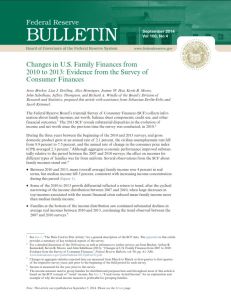Join getAbstract to access the summary!

Join getAbstract to access the summary!
Jesse Bricker, Lisa J. Dettling, Alice Henriques, Joanne W. Hsu, Kevin B. Moore, John Sabelhaus, Jeffrey Thompson and Richard A. Windle
Changes in U.S. Family Finances from 2010 to 2013
Evidence from the Survey of Consumer Finances
Federal Reserve Board, 2014
What's inside?
Bean counters at the Federal Reserve reveal how the beans are increasingly stacked.
Recommendation
The Federal Reserve surveys US households on their finances and credit conditions every three years to gauge Americans’ economic health. Plowing through the morass of analytics, charts and tables in this latest edition, released in late 2014, is not easy, but it is revealing: Years after the financial crisis, the top of the heap is gaining, the bottom of the pile is losing and those in the vast middle are going nowhere. getAbstract suggests this statistics-laden report to analysts and policy makers who are intrigued by the troubling income and wealth accumulation trends it uncovers.
Summary
About the Authors
The authors work in the division of research and statistics at the Federal Reserve Board.





















Comment on this summary